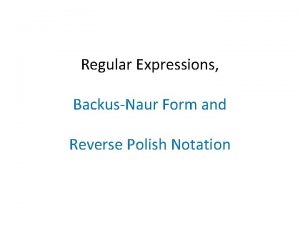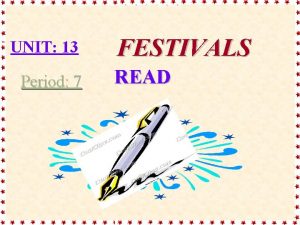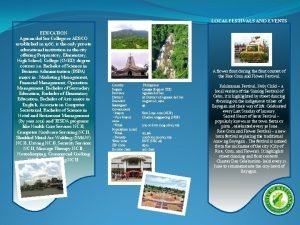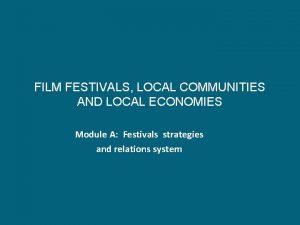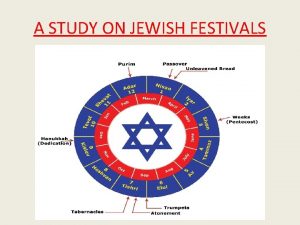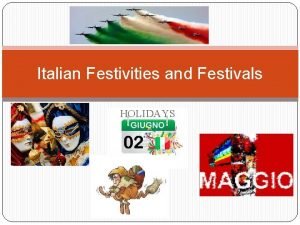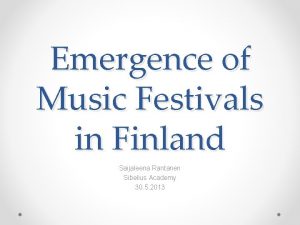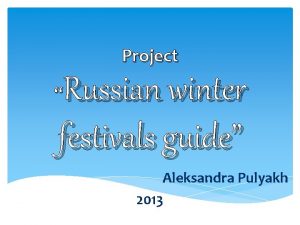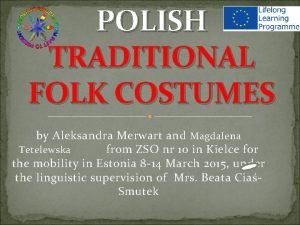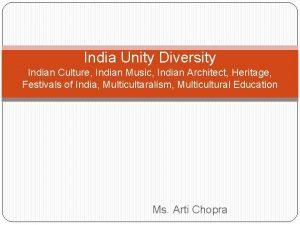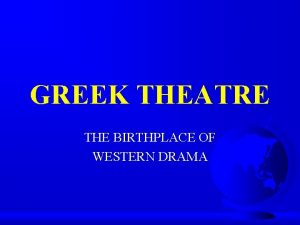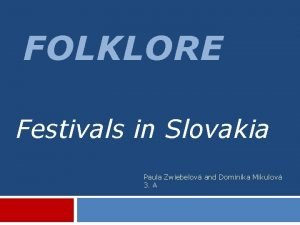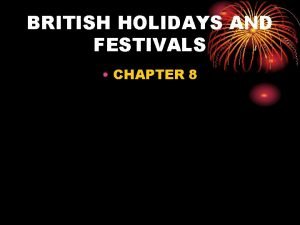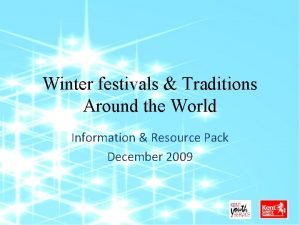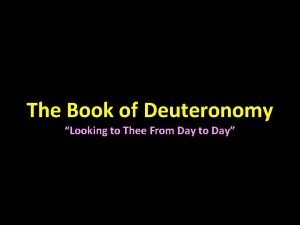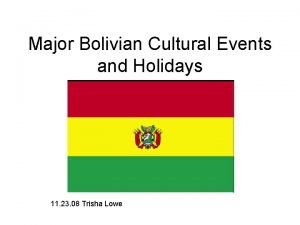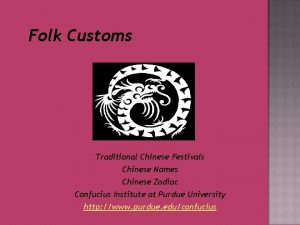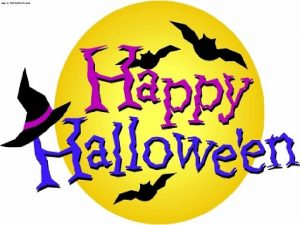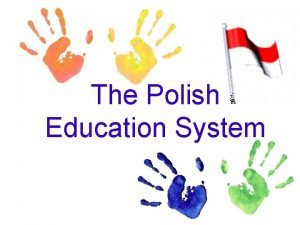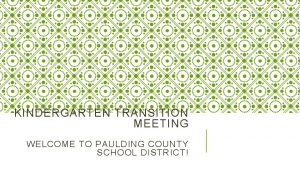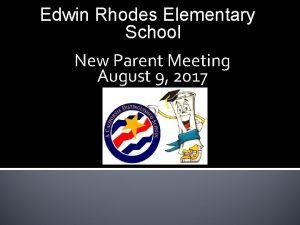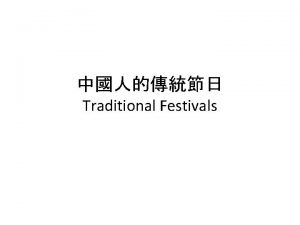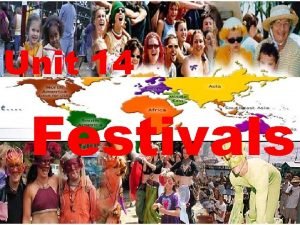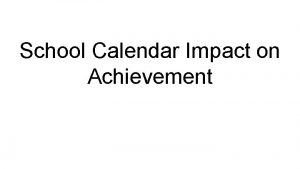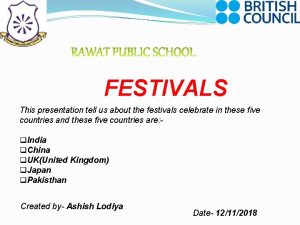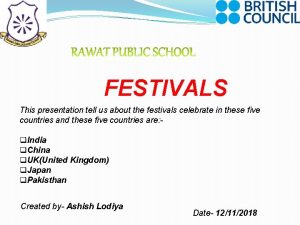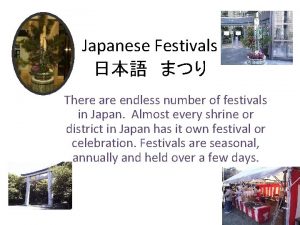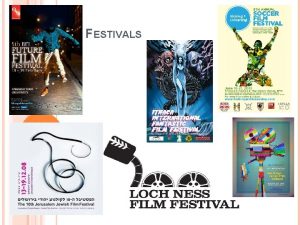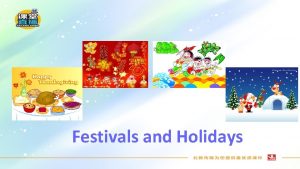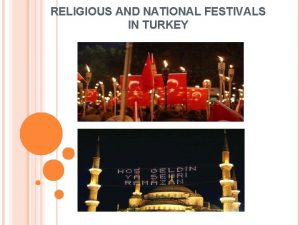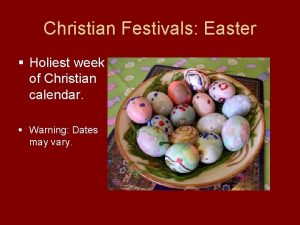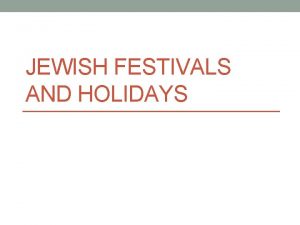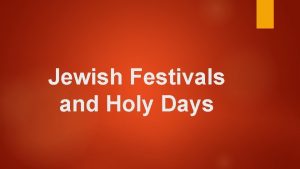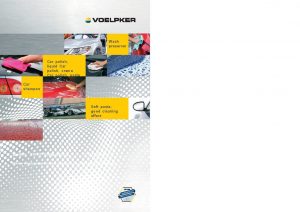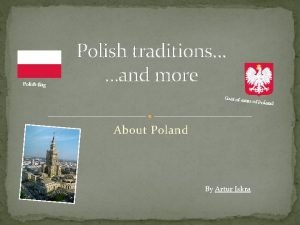A school calendar of Polish festivals 1 st





























- Slides: 29

A school calendar of Polish festivals

1 st of September – first day at school -The school year starts on the 1 of September - There is a Christmas break in December which lasts until after New Year's Day - There is also a winter holiday break lasting two weeks in January or February but the exact date is different for each province and the dates usually change each year -Winter break is also the dividing line between the two semesters of the school year - The school year ends on the first Friday after June 18

School grading 1 (niedostateczny, insufficient) 2 (dopuszczający, poor, passing) 3 (dostateczny, sufficient) 4 (dobry, good) 5 (bardzo dobry, very good) 6 (celujący, excellent)

A vow and a first class pupils' accolade There is a vow and a first class pupils' accolade on October. During a vow children become „a real students”

11 of November – The Independence Day Annual events, always held in November, the month when Święto Niepodległości (Independence Festival, 11 th Nov. ) is celebrated. They are the meetings for the school and local society whose aim is to promote the school, particularly its artistic students. The subject of the meetings concerns important events of Polish history. Different traditions of Polish nation are also presented.

30 th November in Poland – St Andrew’s Night On this day we celebrate a tradition of future telling. This event, in Polish called Andrzejki, has been celebrated in Poland since the turn of 16 and 17 th centuries. The main purpose of Andrzejki celebrations is to predict the future.

Some of the rituals on the Andrzejki night: - pouring melted wax through a key into a bowl of cold water, (the shadows created this way help guess the future) it must be dark in the room and there can be only a candle light, of course it adds to the atmosphere of the evening.

pieces of paper with male/female first names are put on the edges of the bowl filled with water. A candle in the middle of it will burn one of the pieces first thus telling the name of a future husband/wife. three cups flipped upside down, under them a wedding ring, a small cross and a green plant are put. Who choses the ring will have a happy marriage, a cross will bring a life in monastery and the green plant is predicting the unmarried life.

tossing shoes of girls, shoes are arranged one after another along the wall and moved gradually one after another in the direction of the door. The first pair on the doorstep will belong to the girl who will get married as first.

Christmas time In Poland special attention is paid to Christmas. People start to think about it in early November and prepare themselves very carefully. The two nicest moments are buying a Christmas tree (choinka) and presents.

People give each other presents for Christmas in memory of the gifts that the Three Kings brought to the new born Jesus. As Christmas is special, the gifts we give are special, too. We choose them very carefully, because we want to make our relatives and friends happy. Also we send Christmas greetings to our family and friends.

Some people decorate their Christmas trees on Christmas eve, some do it the day before. A typical Polish Christmas tree is colourful and trimmed with hand-made decorations.

A few days before Christmas, Polish housewives start to prepare dishes for the Christmas eve supper. According to the tradition, there should be twelve dishes on the table. Among the dishes there are herrings, carp, trout, borsch or mushroom soup, cakes. Traditionally one place at the table should be set for an unexpected guest (niespodziewany gość). Some hay (siano) is put under the tablecloth.

When the table is set and the Christmas tree is decorated, we wait for the first star to shine. When it can be seen, we sit down to have supper. But before that we start to eat we share a holy wafer (opłatek) with our family and wish each other all the best.

After the supper we unpack the gifts were placed under the Christmas tree. Then we sing Christmas carols (kolędy). Many people go to church for the midnight mass (pasterka).

Mamy, Daddy – keep fit with me! Family Days They are both an opportunity to present students' achievements to their parents and to keep fit together. On these day we celebrate the opportunity of being together – pupils and their parents. Students and their parents jointly perform a variety of physical exercises, prepare healthy meals, they try and learn how to be healthy and get fit.

Easter in Poland

Ash Wednesday - Środa Popielcowa The Polish Easter celebrations, beginning with Ash Wednesday. Most of the Poles try to go to the church for the mass, where priests mark their heads with a cross of ashes while saying: Remember, man thou art dust and to dust thou shall return".

Lent - Wielki Post For Polish Catholics, Lent is the most reflective spiritual season. During this time people are fasting, going to the confession, praying and visiting the specially decorated churches to see "Our Lord's Grave". Each parish strives to come up with the most artistically and religiously evocate arrangement in which the Blessed Sacrament, draped in a filmy veil, is prominently displayed. During the Lent most of the people do not eat meat on Fridays.

Palm Sunday - Niedziela Palmowa On this day people bring the puss willows branches or other custom made wild flowers bouquets instead of palms to the church for the blessing. Some older folks say that swallowing one of the buds from the puss willows branch will ensure health all year. Parishioners processed with the palms through the streets around the parish, celebrating the triumphant entry of Jesus into Jerusalem. Blessed "palms" are taken home and placed by the crucifix or holy images, and remain there until the next year.

Holly Saturday On Saturday people take to churches decorated baskets (Swieconka) containing a sampling of traditional food to be blessed. Swieconka is very popular Polish tradition. Also this day typically Polish ceremonies are performed in the church yard. It is the blessing of the fire, the reverence which goes back to pagan times.

Food Blessing - Święconka Swieconka is one of the most enduring and beloved Polish traditions. On Saturday people take to churches decorated baskets containing a sampling of traditional food to be blessed: hard-boiled shelled eggs, ham, sausage, salt, horseradish, fruits, bread and cake. Prominently displayed among these is the Easter lamb, usually molded from butter or sugar and colorful pisanki. The food have a symbolic meaning, for example: * eggs - symbolize life and Christ's resurrection, * bread - symbolic of Jesus, * lamb - represents Christ, * salt - represents purification, * horseradish - symbolic of the bitter sacrifice of Christ, * ham - symbolic of great joy and abundance. The food blessed in the church remains untouched until Sunday morning.


Written Eggs - Pisanki The custom of coloring eggs for Easter is still observed in Polish custom. The eggs are decorated with many traditional Polish symbols of Easter. Most popular are lamb, cross, floral designs or Easter's greetings such as Wesollego Alleluja.

Easter Sunday - Wielka Niedziela On Easter morning, a special Resurrection Mass is celebrated in every church in Poland. Following the Mass, people return home to eat the food blessed the day before. On the middle of the table in most homes housewife will put colored eggs, cold meats, coils of sausages, ham, yeast cakes, pound cakes, poppy-seed cakes, and a lamb made of sugar. Polish Easter Soup called Zurek or White Barscz is often served at the Easter meal, garnished with the hard-boiled eggs and sausage.

There is also tradition to share blessed eggs with the members of the family and wish each other good health, happiness for the rest of the year.

Wet Monday - Lany Poniedziałek Monday is a holiday in Poland is called in polish "Lany Poniedzialek" or "Smigus- Dyngus". This is a wonderful day of fun. The ancient Polish tradition on Easter Monday, is celebrated by everyone with enthusiasm by sprinkling each other with water. Especially kids have fun this day. Some people say that by being splashed with water on Easter Monday will bring you good luck throughout the year.

School trips and camps Education is not only learning in school. Annual excursions and camps are the chance to visit many interesting spots and integrate. Students in grades third annual leave for three weeks of camp during which they learn and relax.

Graduation Ceremony The day of graduation is full of joy. . . and emotions.
 Normal polish notation java
Normal polish notation java Polish prefix
Polish prefix Unit 13 festivals read
Unit 13 festivals read Agusan del sur festivals
Agusan del sur festivals Greek theater history
Greek theater history Swot analysis of festivals
Swot analysis of festivals Jewish festivals in order
Jewish festivals in order Cultural holidays in italy
Cultural holidays in italy Music festivals finland
Music festivals finland Russian winter festivals guide
Russian winter festivals guide Poland outfits
Poland outfits Unity in diversity in indian culture
Unity in diversity in indian culture Birthplace of theatre
Birthplace of theatre Detva festival
Detva festival British holidays and festivals
British holidays and festivals Winter festivals around the world
Winter festivals around the world Old testament festivals chart
Old testament festivals chart Bolivia holidays and festivals
Bolivia holidays and festivals Greek theatre festivals
Greek theatre festivals List of chinese festivals
List of chinese festivals 12 olympian gods
12 olympian gods Festivals in english speaking countries
Festivals in english speaking countries Polish school system
Polish school system Valle verde early college high school calendar
Valle verde early college high school calendar Missouri guidance lessons
Missouri guidance lessons Paulding county school bus locator
Paulding county school bus locator Granite school district calendar
Granite school district calendar Githens middle
Githens middle Faday
Faday Edwin rhodes elementary school calendar
Edwin rhodes elementary school calendar
